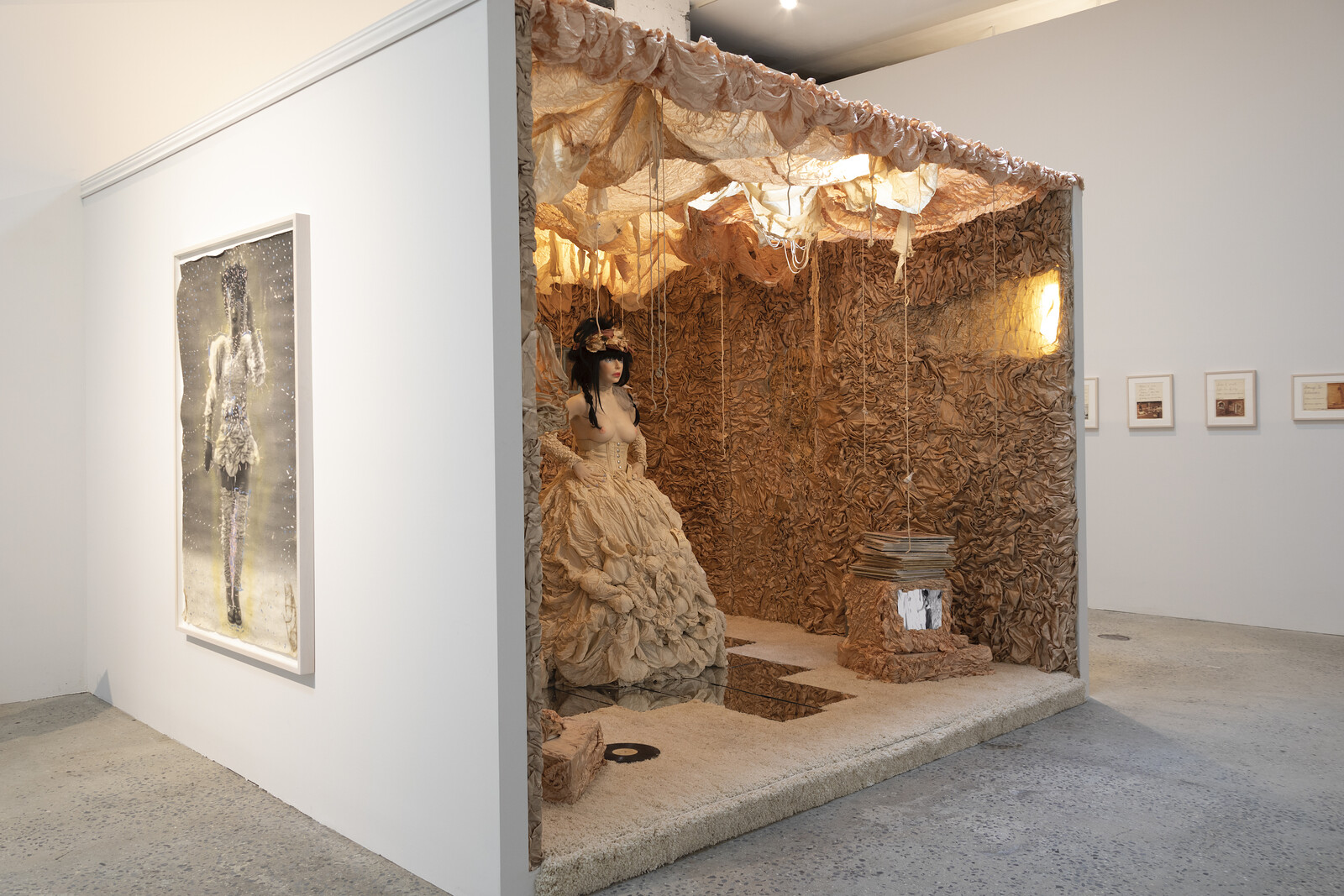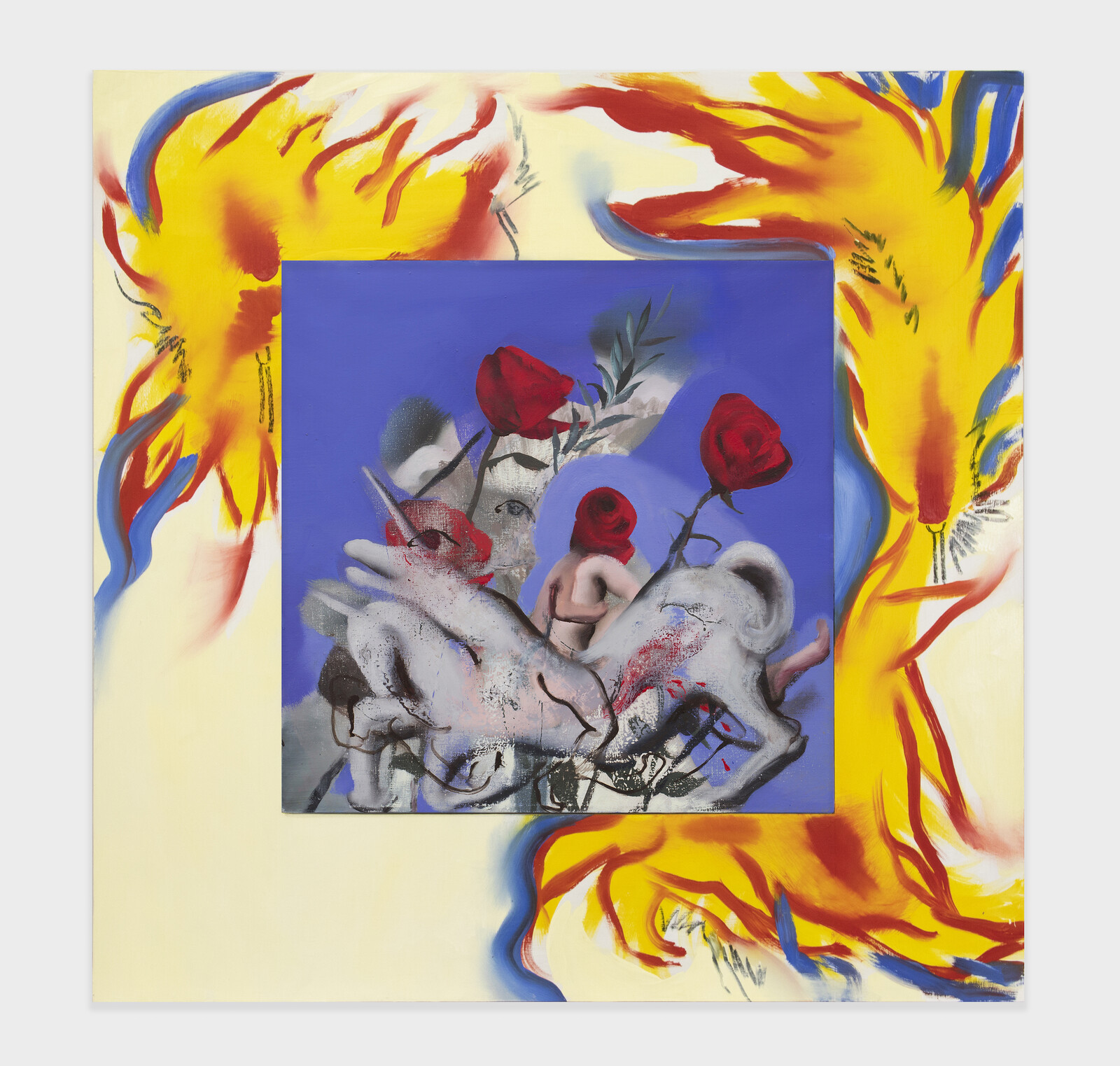Categories
Subjects
Authors
Artists
Venues
Locations
Calendar
Filter
Done
December 20, 2021 – Review
Colette Lumiere’s “Notes on Baroque Living: Colette and Her Living Environment, 1972–83”
Wendy Vogel

Colette Lumiere’s art is unmistakably original, though its reverberations throughout pop culture may inspire feelings of déjà vu. Spanning painting, sculpture, and performance tableaux, as well as interior design, music, fashion, and the branding of various personae, Colette’s “Deadly Feminine” aesthetic crystallized in the New York of the late 1970s and early ’80s. Her work is born of the unique cultural collisions of that time—disco, punk, and new wave; the countercultural underground and the emerging art market; feminist ideology and postmodernism; and a thirst for glamor in a city plagued by crime and bankruptcy. Much like punk’s jarring aesthetics, Colette’s winking appropriation of theatrical femininity (with nods to the bohemian demimonde) has moved from the artistic fringe to a canny marketing posture in pop and art. Her restless and shapeshifting influence has become part of the cultural ether.
This exhibition focuses on the fruitful period of 1972 to ’83. At the show’s core are garments and artifacts from her Living Environment, staged in her Wall Street–adjacent loft during these years. There, Colette suspended satiny ruched fabric in unabashedly feminine shades of blush and cream from every available surface. The look was described by one writer as “suffocating voluptuousness”—a …
December 9, 2020 – Review
Ambera Wellmann’s “Nosegay Tornado”
Jessica Caroline

Ambera Wellmann’s roses are not sick. They are not exactly well, either. The paintings in “Nosegay Tornado” stage fantasy landscapes in which bodies topple out of other bodies, depersonalized and pliable, genitalia effaced, often surrounded by enormous flowers. Her arrangements call to mind the doomed visions of Georges Bataille or William Blake, in which beauty is always poised between grace and destruction. Wellmann’s work also exists at the juncture of excess and profanity, where the material and spiritual realms dissolve into each other. Her triumph is to make these weary old Romantic and Surrealist tropes seem fresh.
In The Unicorn Captivity (all works 2020), roses are anxious placeholders for human heads. Their bodies ride a two-headed unicorn beneath echoes of the eye in Odilon Redon’s Le cyclope (c. 1914); the scene is bordered by flames. The edges of Wellmann’s brushstrokes are soft, her contours indistinct. Like many of the bodies in her paintings, the unicorn appears to be splitting and doubling, recalling earlier works that play on the idea of autoscopy—the ability to hallucinate externalized versions of oneself. Blue Bouquet presents a different kind of framing device, giving the impression that the viewer is peeping through a service window or, perhaps, …